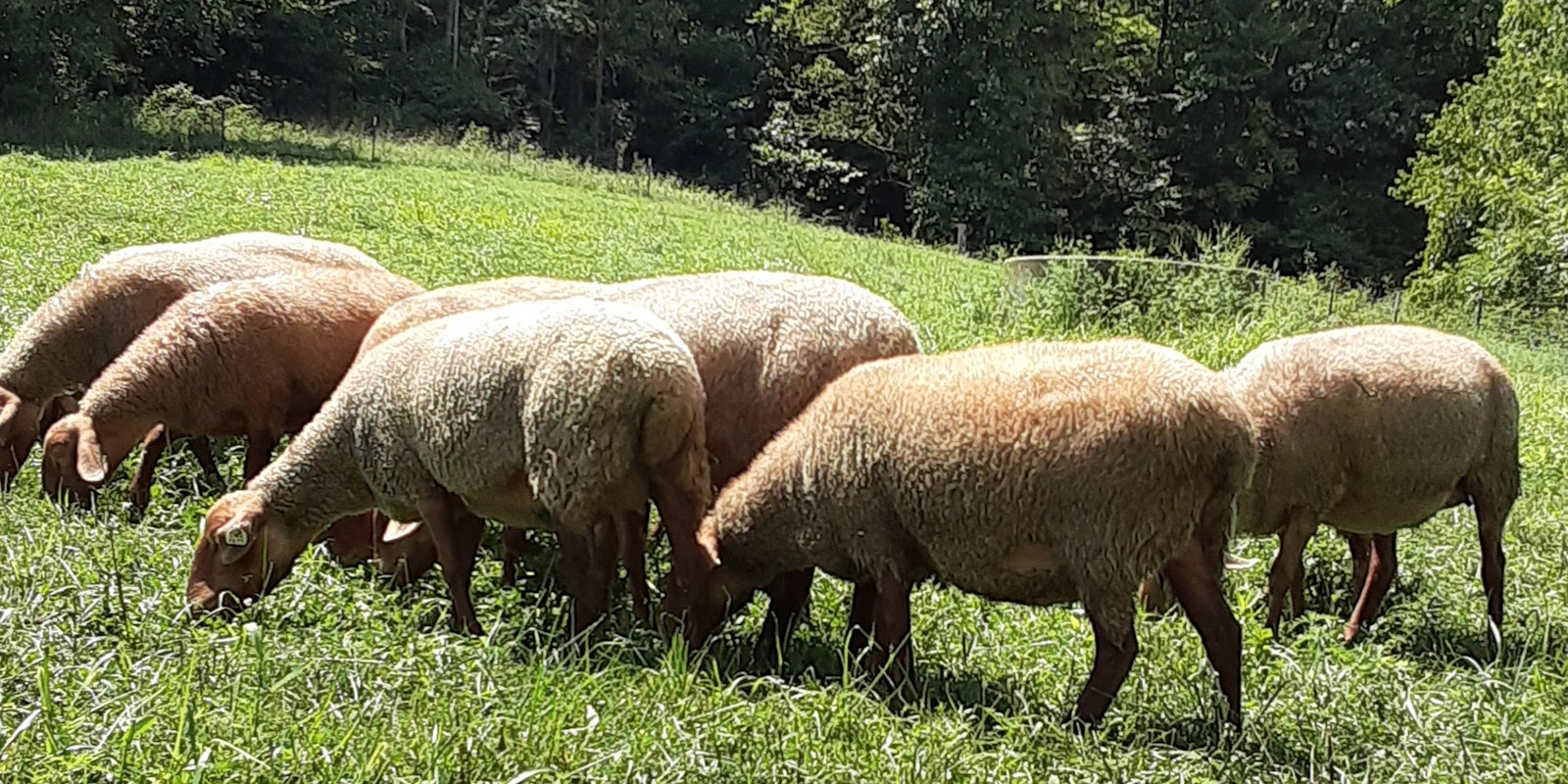Our flock of Tunis sheep is out on pasture year-round. During the spring, fall, and early winter, the sheep graze on pasture and receive their nutritional needs from the grass and other forage. Each day, or every other day depending on the season, they are moved to a new area to graze. This practice, called rotational grazing, allows the flock to have access to new grass frequently. This reduces their exposure to parasites, improves the pasture and soil, and ensures that they have good quality of grass every day.
Rams are separated from ewes during the grazing season and overwinter separately from the ewes. They are placed into breeding groups each September and removed each December. Ewe lambs are not bred the year they are born, so they have their own separate paddock during breeding season. They are always happy when reunited with their moms again in December.
The Arrival of Lambs
As the seasons change from winter to spring, we prepare for lambing. I refer to this as “March Madness” due to the weather, the onset of lambing, and the beginning of shearing season. All of the ewes are moved to a paddock with barn access in late February.
 Tunis lambs are born with red hair, but it is quickly replaced with creamy white wool.
Tunis lambs are born with red hair, but it is quickly replaced with creamy white wool.
Tunis are a very hardy breed, and we seldom need to assist them. Lambs are born dark red, the hallmark characteristic of the breed. Twins are typical, and triplets are not unheard of. The lambs are up and walking within minutes of birth. After the lambs are born, I weigh them and move the mom and lambs into a private space in the barn (called a lambing jug) to make sure everything is OK. The next day, the lambs are tagged and vaccinated against tetanus, and then both mom and lambs are returned to the flock.
Shearing and Appreciating
I start shearing the flock as soon as the weather allows. March can be really cold and wet, and I don’t shear until the threat of snow and rain recedes. Sheep cannot be shorn when it’s wet. Starting with the rams, I work my way through the lambs and then the ewes after they lamb. Our flock is uncoated, and since they are on pasture year-round, it’s quite a production bringing them in the barn and getting them shorn. I take great pains to skirt each fleece heavily to ensure that the roving and yarn that we have processed are of high quality. A spinner myself, I check each fleece for soundness and suitability for processing. Some fleeces will make excellent yarn, while others are better suited to roving. A few special fleeces are sold to people who enjoy processing fleeces by hand. Fleeces are then sent to various small, artisan fiber mills around the country, all owned and operated by other fiber producers.
 Tunis are shorn once a year, typically during the spring.
Tunis are shorn once a year, typically during the spring.
Small farming is having somewhat of a renaissance, and great quality fiber from small flocks is easier to find than in years past. We are proud to connect people with awesome fiber from this amazing rare breed.
 After shearing, fleeces are skirted and evaluated. A select few are sold directly to customers, but the majority are sent to small mills to be processed into roving and yarn.
After shearing, fleeces are skirted and evaluated. A select few are sold directly to customers, but the majority are sent to small mills to be processed into roving and yarn.
Looking for a project to use that wonderful handspun Tunis in? Check out the Towline Hat by Kerry Bullock-Ozkan —Spin Off Editorial team
Charis Walker and her family raise Tunis sheep, Galloway cows, bees, and more in southern Ohio at Tarheelbilly Farm.

